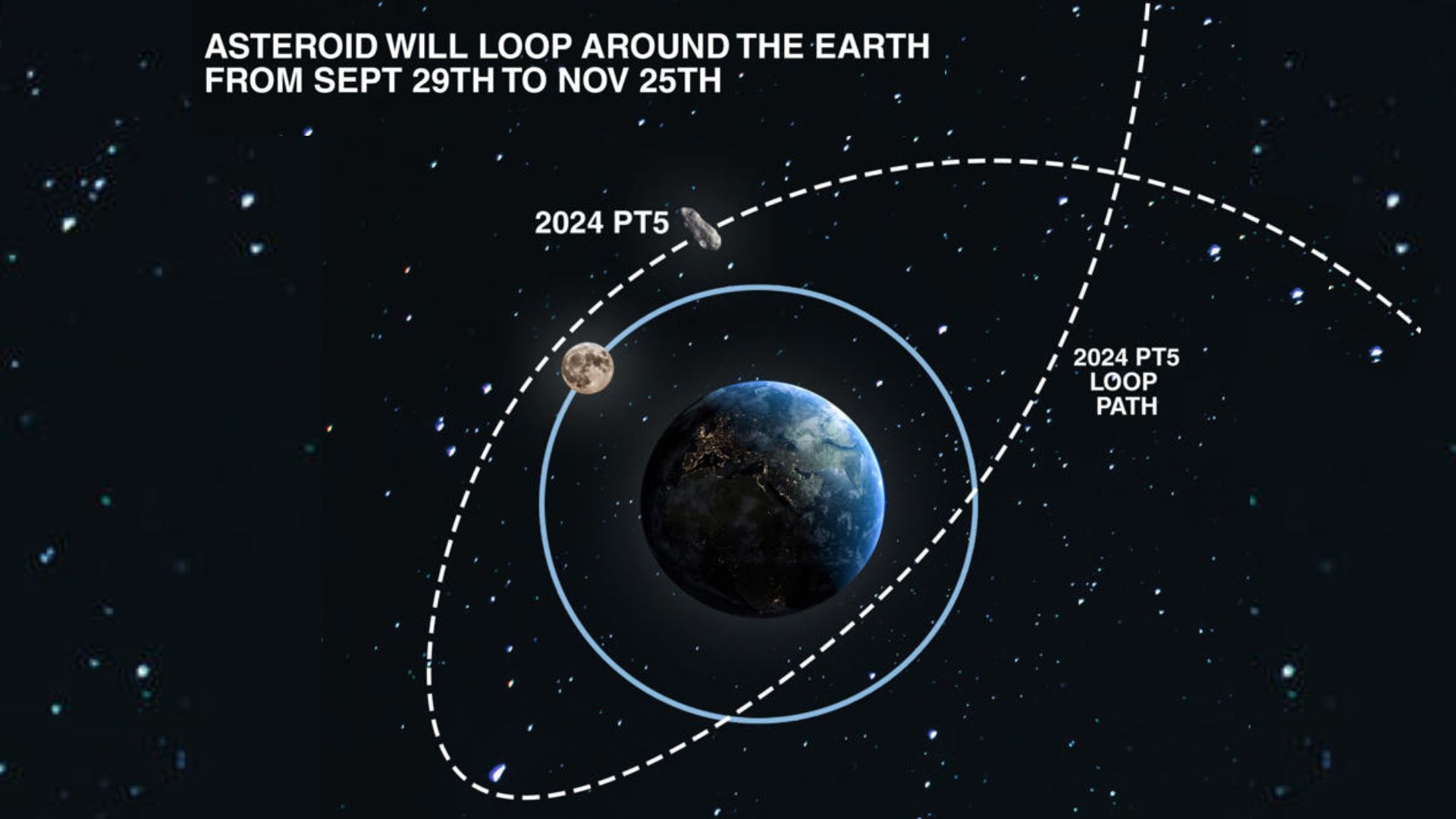
Earth to welcome temporary mini-moon 2024 PT5 this month
The small asteroid 2024 PT5 will orbit Earth this month for nearly two months before reverting to its original location in the asteroid belt, giving Earth a temporary second moon.
During its brief visit, this "mini-moon" will not complete an orbit around Earth, in contrast to Earth's principal moon, which has been with the planet for about 4 billion years.
A team of scientists specializing in "mini-moon events" identified the gravitational capture of 2024 PT5 while monitoring newly discovered objects for unusual behavior.
Lead researcher Carlos de la Fuente Marcos from Universidad Complutense de Madrid explained that 2024 PT5 belongs to the Arjuna asteroid belt, which contains space rocks following orbits similar to Earth's.
"Objects in the Arjuna asteroid belt are part of the near-Earth object population of asteroids and comets," Marcos noted.
Certain objects within this belt have the ability to approach Earth at low speeds of approximately 2,200 miles per hour (3,540 km/h) and at distances of approximately 2.8 million miles (4.5 million km).
These particular circumstances have the potential to cause the asteroid's geocentric energy to drop, briefly turning it into a mini-moon. "This particular object will undergo this process starting next week and for about two months," Marcos said.
He compared the behavior of 2024 PT5 to that of "window shoppers," saying, "You may say that if a true satellite is like a customer buying goods inside a store, objects like 2024 PT5 are window shoppers."

Mini-moon events can be categorized into two types: long captures, where the asteroid completes one or more orbits, and short engagements, which last days, weeks, or a few months without a full orbit.
For an object to become a mini-moon, it must approach Earth closely and slowly, meeting the criteria of approximately 2.8 million miles and 2,200 mph.
Marcos noted that science has only identified two long captures (2006 RH120 and 2020 CD3) and three short captures (1991 VG, 2022 NX1, and 2024 PT5), with several unpublished examples.
Short mini-moon events are relatively common, occurring several times a decade, while long captures happen about once every ten or twenty years.
The gravitational disturbances caused by the sun lead to the ejection of these objects from Earth's vicinity. Once 2024 PT5’s role as a mini-moon concludes, it will revert to a sun-centered orbit.
Unfortunately, the asteroid will not be visible to most amateur astronomers. "The object is too small and dim for typical amateur telescopes and binoculars," Marcos explained.
He emphasized that a telescope with a diameter of at least 30 inches and a CCD or CMOS detector is necessary to observe 2024 PT5, and the team plans to conduct spectroscopic and photometric observations to learn more about it.

.jpg)










